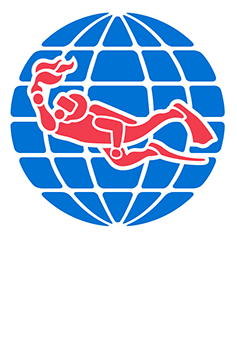Today is World Manta Day 2021 – a day to celebrate manta rays around the world as well as raise awareness of the threats they are facing worldwide. We thought we’d take this opportunity to share some facts about these incredible animals!
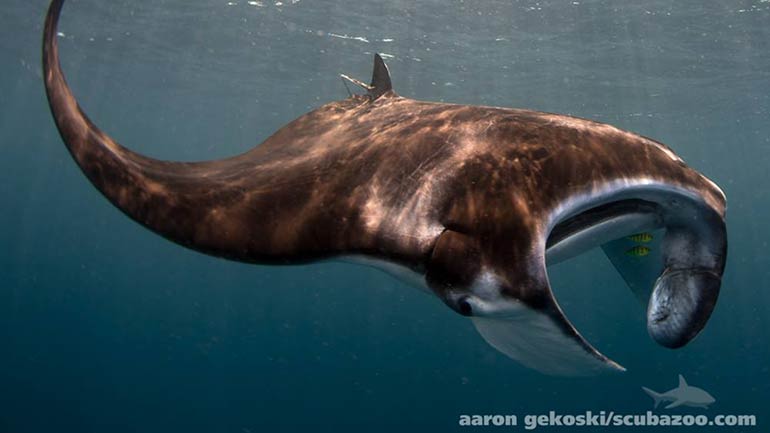
There are two types of manta rays, the Oceanic Manta (M. Birostris) and the Reef Manta (M. Alfredi). Oceanic mantas can reach a wingspan of 7 metres, with the largest individual ever recorded measuring over 9m!! Reef mantas are a little smaller at 3-5m (still pretty huge, we know!)
Despite being very large animals, manta rays are completely harmless – unless you are a zooplankton that is… Mantas are filter feeders, and feed on tiny animals called zooplankton which are commonly found near the surface.
They’re not actually manta rays anymore! At least scientifically… A study from 2017 showed that manta rays are much more closely related to mobula rays (or devil rays) than originally thought. The genetic makeup is so similar, their small differences do not warrant the separation of the genera. This led to the reclassification of mantas into the Mobula genus. Despite this fact, divers and snorkelers all over the world have since kept on using the beloved term “manta ray” to describe these gentle giants!
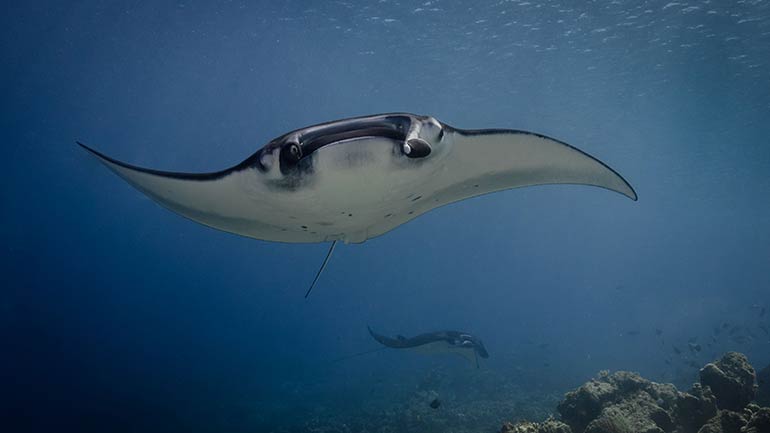
Manta rays have the largest brain-to-body weight ratio of any fish – they are incredibly intelligent animals! If you’ve ever encountered one underwater, you’ll likely have noticed that they are very curious, and there have been many reports from divers across the world about complex social interactions! Studies have even shown that manta rays can recognize themselves in a mirror – which indicates high intelligence also seen in dolphins, elephants and primates.
Each manta ray has an individual spot pattern (think fingerprint) on their underside. This pattern can be used to identify individuals and is very helpful for researchers to understand more about their behaviour (which in turn is essential to further protect them). We always encourage our guests with cameras who manage to get pictures of their belly to submit the photo on www.mantamatcher.com – a great initiative to help identify and protect manta rays through citizen science.
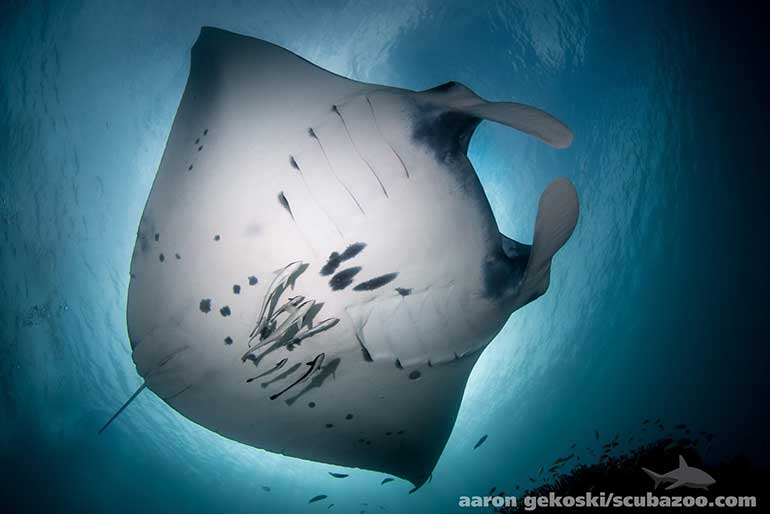
If you’re a diver you probably already know that you should never ever touch marine life. But did you know why? Like many other fish, a manta rays skin is covered in a film of mucus, which serves as a protective layer. This is one of the reasons you should never ever touch a manta ray – your hands can break the film and leave them vulnerable to infections and disease. In addition, many of us are also using beauty products or perhaps sunscreen, which can also be very harmful for manta rays!
Mantas have to keep swimming to survive. It is essential to push water through their gills. If they would stop swimming they would not survive! This is why discarded fishing nets and other marine debris is so dangerous to manta rays (and other sharks/rays and marine life for that matter).
Manta rays have very long gestation periods, and usually give birth to just ONE single live pup every few years. The pups resemble a miniature manta ray and can immediately survive on their own, without any parental care. Manta rays take approximately 10 years to reach sexual maturity, and the pregnancy lasts for nearly 13 months! Their slow reproduction rate combined with the many threats they are facing are sadly contributing to declining manta ray numbers across the globe.
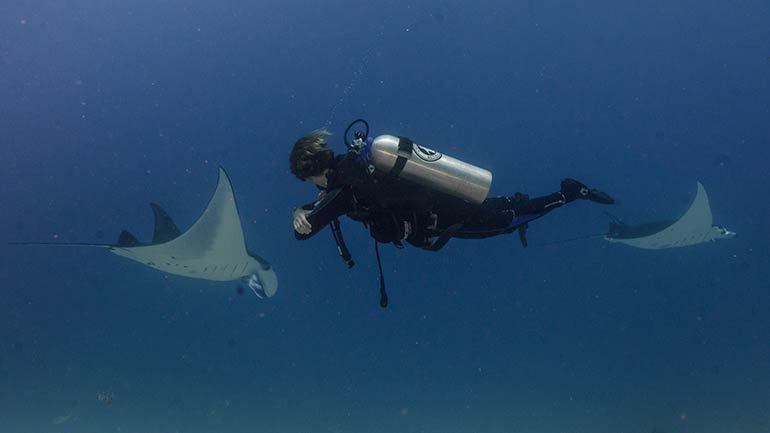
Sadly manta populations all around the world are declining, and are facing a number of different threats. Perhaps the biggest threat to manta ray populations is overfishing – whether unintentionally through bycatch or being hunted for their body parts. They are hunted both for their meat, and ever more for their gill plates – which are in high demand in certain types of traditional medicine – despite a severe lack of evidence that they have any health benefits to the consumer. Thousands of manta rays are killed each year for their plates, and they are listed as Endangered (Oceanic) and Vulnerable (Reef) on the IUCN red list.
Another imminent danger manta rays are facing is related to climate change, which is threatening to change the supply and quantity of zooplankton – their main source of food. Coral bleaching can as well lead to the destruction of habitat and cleaning stations.
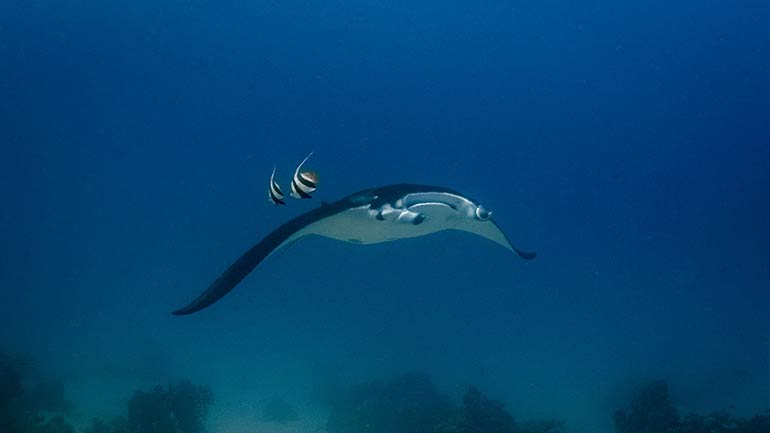
We are very fortunate here at Scuba Junkie Sangalaki as we still have a very healthy population of manta rays in our waters. In fact, Sangalaki is one of the best places in the world to dive with manta rays! The island offers incredible opportunities to dive and snorkel with mantas, all year round. We often see them passing by even on our surface intervals! Want to know more about the diving around here? Check out the different islands in the Sangalaki Marine Park here!
Scuba Junkie’s Water Bungalow Dive Resort is situated on Derawan island, Kalimantam, Borneo and offers amazing diving in all of the islands in the Sangalaki Marine Park. Here we thought we’d introduce you to Scuba Junkie Sangalaki so you know what to expect ahead of your trip including where we are, how to get to us, what the resort is like and what you can see on your dives.
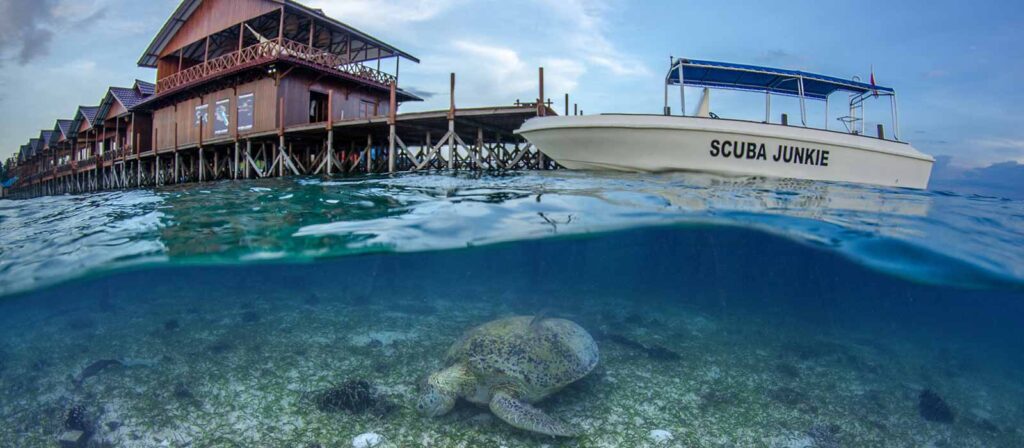
It’s true that this area is not so well known, but that’s a great thing if you ask us! It means we can take you to beautiful islands and dive sites away from the crowds.
Derawan island is part of Indonesian Borneo – Kalimantan. It’s in the Kalimantan Timur region – Our closest town on the main island of Borneo is Berau, which is one of the places you can fly to in order to reach us, our other closest town is Tarakan – itself an island a bit further North.
Derawan island has a local fishing community, a couple of other resorts and some homestays. The locals are really friendly and welcoming.
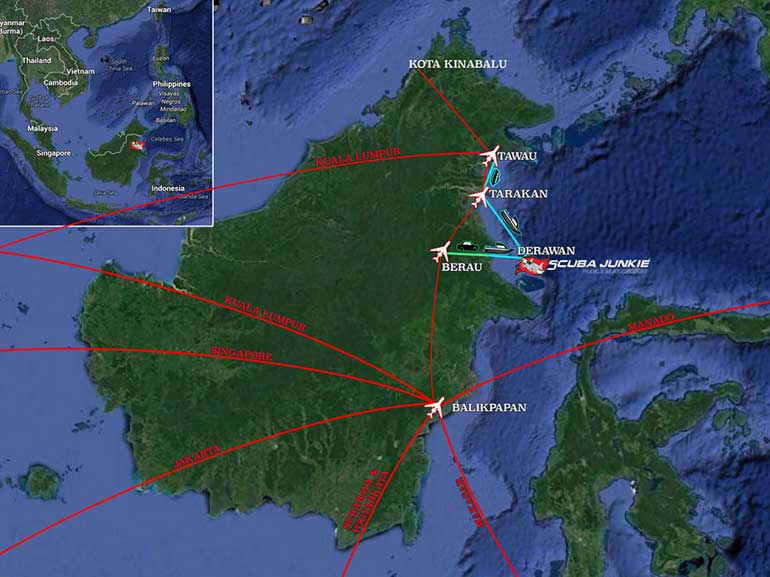
The area is served my two main airports – Tarakan (TRK) and Berau (BEJ).
From Tarakan airport we can pick you up at the airport and bring you to the harbour, where the transfer boat will bring you to the resort on Derawan. Our transfer service runs on Mondays and you can expect the speed boat ride to take between 3-4 hours.
You would fly in to Tarakan from Tawau, Malaysia (great if you’re combining your trip with Scuba Junkie Sipdan or Scuba Junkie KK). You can also fly to Tarakan from Jakarta.
Otherwise you’ll fly into Berau – most of the time you’ll connect in Balikpapan (BPN), which is served by flights from Singapore, Jakarta, Bali and other Indonesian hubs. If you’re coming from Scuba Junkie Komodo, or Scuba Junkie penida, you’d take this route!
From Berau it’s a 2-2.5 hour taxi ride followed by a 30 minute speed boat ride to Derawan.
We can arrange all of the transfers for you, and if you’re not sure which airport is best to arrive into, just ask!
Once you’ve arrived on Derawan we’ll welcome you into the resort. Our seven water bungalows and our 4-bed water dorm are a very short walk away from the dive centre and chill out area.
We have 3 double water bungalows; 3 twin-bed water bungalows and one bungalow which can be converted between double and twin bed configuration. Our dorm sleeps 4 and has comfy bunk beds.
All bungalows and the dorm have a spacious balcony where you can relax after your dives and watch Derawan’s green turtles when they swim up to eat the sea grass!
The bungalows are AC-cooled, have en-suite bathrooms with hot showers, a small safe plus they’re equipped with an umbrella and a backup torch in case of emergencies! Furthermore all have black-out curtains and cozy duvets. The dorms are fan-cooled and also en-suite. As we’re built over the water the rooms are pretty cool!
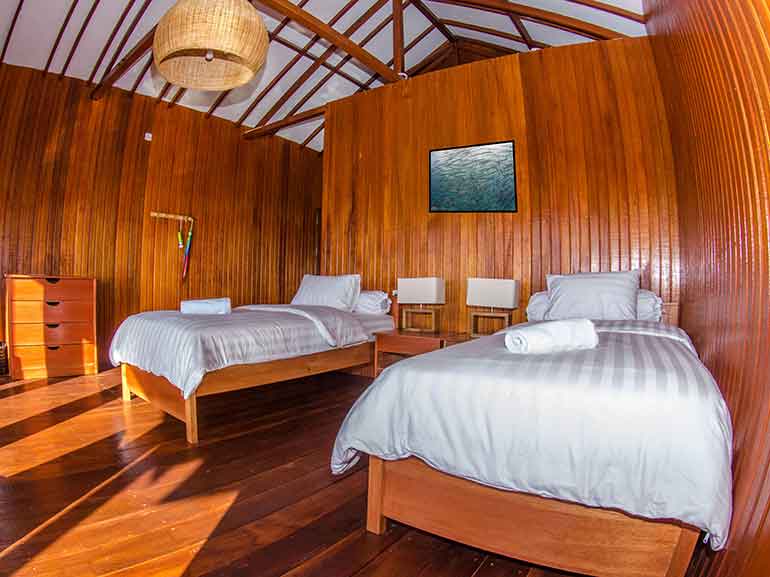
Our amazing chill out area is upstairs, above the dive centre and offers spectacular sunset (and sunrise) views, and is an ideal place to watch for turtles swimming by.
It’s also where you’ll eat breakfast in the mornings and log your dives with your guide after diving – Of course we have cold beers and soft drinks available as well as squishy bean bags and hammocks!

We’re a PADI 5* dive centre, like other Scuba Junkie resorts and dive centres. We cater for up to 20 divers and we stock Mares rental equipment – 3mm long wetsuits an open heel fins with booties for your comfort. We also have Suunto Zoop dive computers for rent.
Our fiberglass dive boats dock straight outside the dive centre so it’s easy to board for your dive trips, and our boats are equipped with lifejackets, oxygen, first aid, GPS and a satellite phone.
After diving you’ll find the rinse tanks for your equipment (we’ll take care of your BCD and reg if you’re using our gear), and then you’ll have an allocated locker to safely store your equipment overnight.
Yes, yes – this is the part you’ve been waiting for! The Derawan Archipelago and Sangalaki Marine Park consists of the islands of Derawan, Sangalaki, Kakaban, Maratua, Semama and Pandjang. We dive at all islands and they’re very diverse! We leave for diving at 8am and return to the resort around 4-5pm, depending on which island we visit. When diving Derawan it may be possible to return to the resort between dives, if the tide allows. Sangalaki is about 45 minutes away, and both Kakaban and Maratua are about an hour away.
Has gentle sloping colourful coral reefs and small walls, rarely has currents and is a haven for turtles and macro life. We’ll most often dive Derawan as the first day of your package so that you have time to adjust to your equipment in the easy dive conditions. We can offer refreshers here if you haven’t been diving in a while, too. It’s really common to see turtles around Derawan, plus the usual reef suspects such as moorish idols, snapper, batfish, trevally plus awesome macro such as frogfish, ghost pipefish, and pygmy seahorse. It’s also where we do our night dives which are not to be missed!
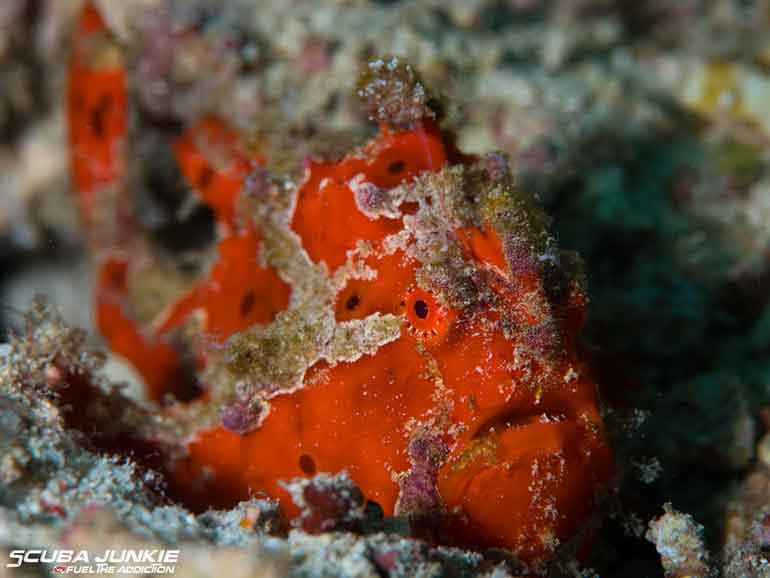
This is where we go to look for Mantas! Sangalaki’s topography is quite unusual… Shallow reefs with sandy channels and coral mounds – often these are cleaning stations for Manta rays! The manta cleaning stations are located on one side of the island, so we often spend our dives here swimming (or drifting) between them. Often the mantas give us a clue as we can see their wings tips giving away their location as they feed at the surface. Sangalaki dives are shallow – max 18m, often shallower. In addition to mantas we also see turtles, leopard sharks, cuttlefish, schooling fusiliers, cool macro life and amazing coral!

Is an uninhabited island and home to the sting-less jellyfish lake – one of only a few in the world! We visit the lake on our surface intervals for snorkeling! The reefs and walls of Kakaban never disappoint – we often drift in the fun currents and we see schooling barracudas, jackfish, black tip and white tip sharks. There are a couple of thresher sharks which we see fairly often and Barracuda Point dive site always throws us some surprises!
Kakaban trips are included with our packages which have 4 days of diving or more.
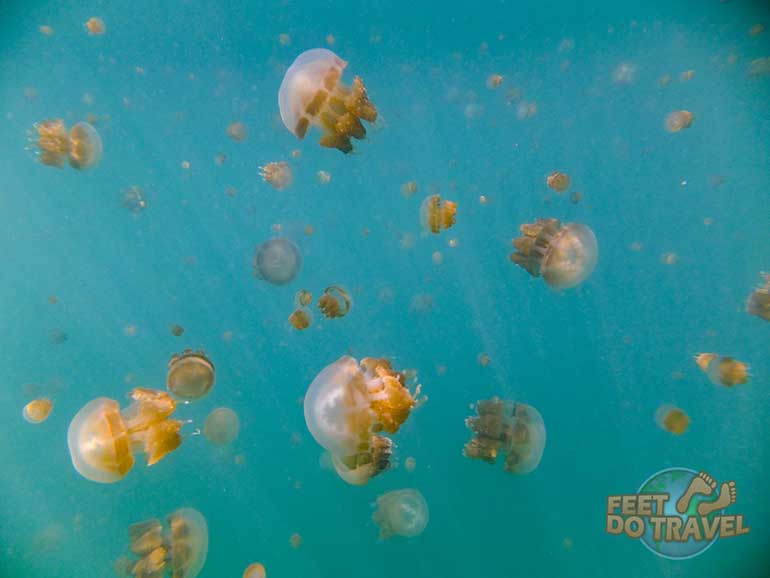
Is the largest of all of the islands and is a unique, horse-shoe shape. The diving around it is stunning wall dives with huge gorgonian fans and also sloping coral reefs. Maratua also has a resident school of barracuda, it too has some fun currents – we usually drift here also while keeping an eye on the blue for tunas, wahoo, rainbow runners and the like. We also see napoleon wrasse, eagle rays and sharks.
Maratua trips are included with our packages which have 6 diving days or more.
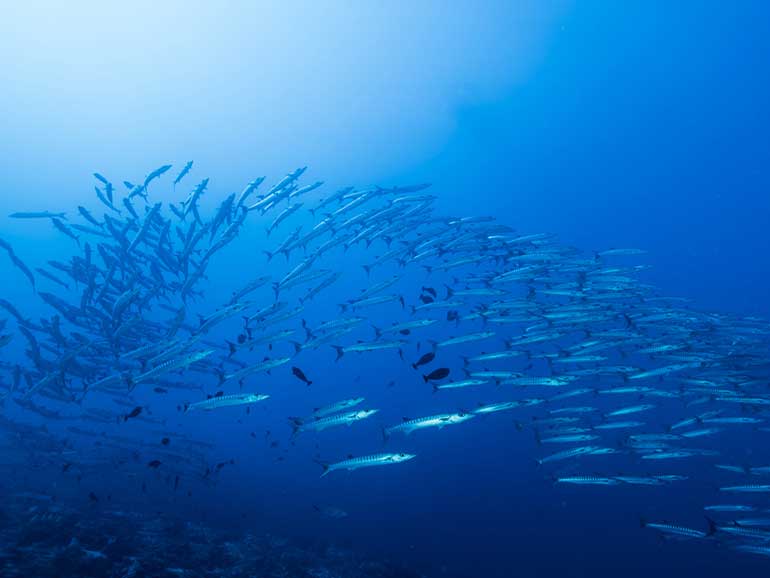
We can also help you with snorkel trips to see the almighty whale sharks!
As with all Scuba Junkie locations you’ll have small dive groups with a maximum of 4 divers per guide, safe and responsible diving practices and a commitment to conservation.
So what are you waiting for?! Get planning your trip – send us an email with any questions you might have!
See you on Derawan!
